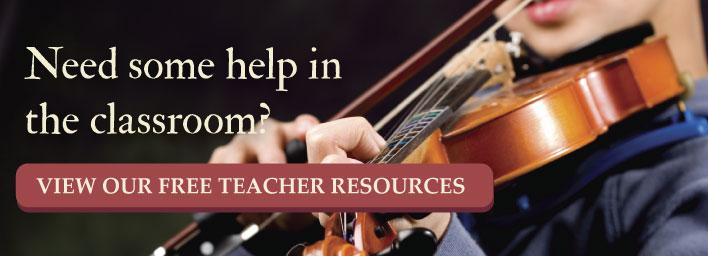4 Ways Music Teachers Can Get New Students

Being a music teacher is a rewarding, yet challenging profession. In addition to developing innovative ways to reach students and inspire them with a passion for music, you have to be a business manager, organizer, and recruiter all in one. This is particularly true for musicians who offer private lessons, but even if you work within a structured school setting, without a certain number of students filling your seats, you risk having your program cancelled or cut back.
Therefore, music teachers must perform a variety tasks that require a range of specific skill sets. Chief among them is the ability to get new students. Much like an independent entrepreneur operating on a tight budget, you have to develop effective methods for reaching new clients without incurring a large outlay of funds. Fortunately, there are a number of ways to do just that, and this list can help get you started in the right direction.
1.Social Media:
Online communication is extremely important for garnering new students for your music class. This powerful tool provides a host of ways to reach out to new students and communicate with current ones. Your music class should have a Facebook page at the very minimum. Other important social media sites include Twitter, Linkedin, and Tumblr. Use these and similar ones to stimulate interest and keep people appraised about your music course. For example, you can post things like:
- Information about upcoming recitals and concerts
- Community and charitable events that your class is participating in
- Conduct polls concerning new music to try (incorporate)
- Discuss problems and solutions for students
- Post videos on difficult techniques so that your students have a place to look for at-home help, if needed
2.Word-of-Mouth:
Your time investment in social media will help create word-of-mouth advertising for your music class, but there are additional ways to generate buzz. When your students really enjoy attending your music class, they will talk about it with their peers. Naturally, something fun will appeal to the students not involved and generate interest in your class.
- You can keep your music class exciting and something that your students will want to brag about by developing a cool environment. This might involve the type of decorations you display in the classroom, like posters and inspiring artwork, or it may entail finding the latest popular music for your students to perform. Either way, when you make your music class ma place that your students eagerly want to attend, they’ll tell their friends and you’ll end up with more new students.
3.Community Involvement:
Another great, affordable way to garner new students in your music class involves expanding your community outreach. If people don’t know about your class, they can’t join. And although the methods you use will largely depend on your exact location, many techniques are applicable for any region. Ideas include:
- Visiting local businesses to solicit support for upcoming events
- Arranging to perform free concerts for retirement and assisted living facilities
- Having your class join in community clean-up projects and other charitable deeds
- Creating a funding drive that will provide instruments for underprivileged students
But, don’t forget to post any and all of your planned activities on your social media sites.
4.Extoll the Benefits of Music Education:
The parents and students in your area need to know how beneficial a music education can be. New research has shown that students who are exposed to a music education display stronger academic performance (especially in areas like mathematics and reading comprehension), but there are many other advantages created by learning music, and parents need to understand them.
- Start a weekly or bi-weekly blog about the various cognitive and social enhancements that music provides.
- Or, if writing isn’t your thing, simply look for articles and studies online that you can link to your social media sites.
- Include the facts that learning to play a musical instrument has been shown to reduce memory loss in the aging brain, develop workforce skills like teamwork and decision-making that are important to college and hiring boards, and build self-discipline and esteem. These advantages are integral for success in today’s competitive job market.
This type of information can be presented in a variety of forums. In addition to your social media sites, contact local public and private schools to see if you can include an article in their monthly newsletter or school paper.
Getting new students to enroll in your music class takes effort, but with a little practice, you’ll see the fruit of your labors in the numbers of students who currently fill your seats.


